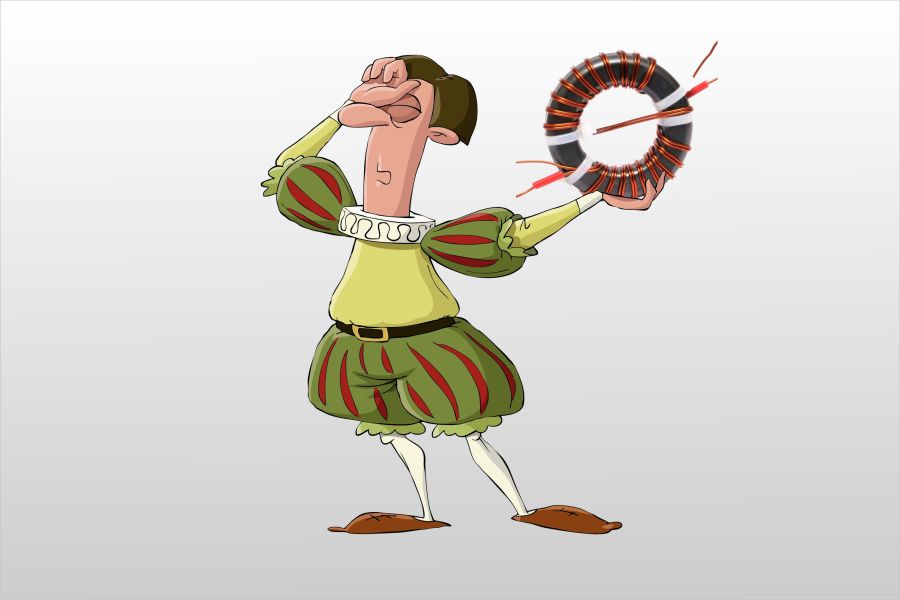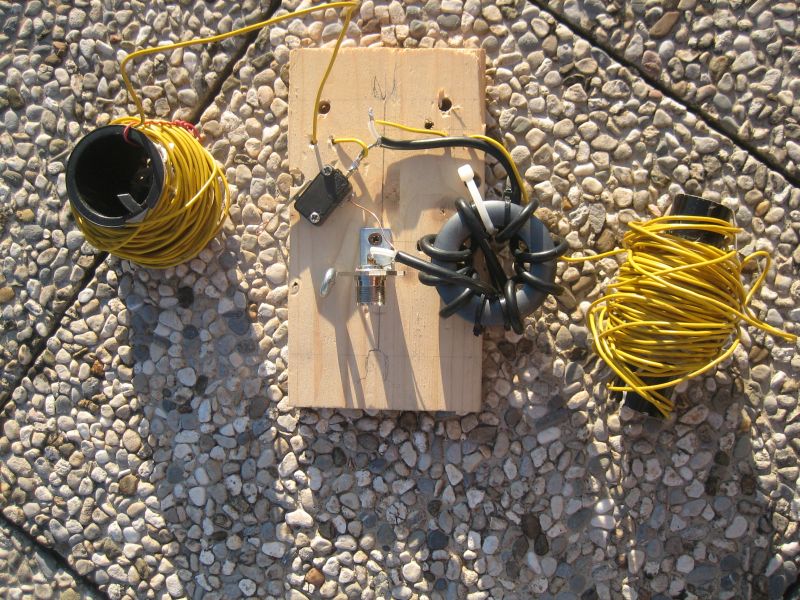
that is the question, for many ham radio operators. A simple, resonant, single band, plain-vanilla horizontal dipole, does really need a 1:1 balun… or not?
To investigate the differences between a dipole having a 1:1 balun and another one directly connected to the coaxial cable, I build a 40m band dipole with a remotely controlled switch that could bypass the balun on demand:

Then I conducted a few experiments that I have documented in a video.
I hope you’ll enjoy it!


Bonjour,un balun 1/1 ne peut étre en totalité imperméable de 3,5 à 30 mhz quelques soit ça conception (tore ou baton de férrite) à mon avis pour assurer un minimun de distorsion il est préférable d’utiliser un balun 1/1 pour seulement les dipoles et si possible en conception coaxiale.Pour une antenne multibande alimenté avec du cable coaxial il est conseillé de ne pas en utiliser car il peut compliquer le fonctionnement sur certaines fréquence.Pour une antenne multibande,utilisé plutôt une alimentation à ligne bifilaire (300-450-600).
Un balun 1/1 de bonne conception en cable coaxial ne provoque aucun ros supplémentaire.
I like the post, planning to add 1:1 for my present hf 40 m anteena
de vu3ave
India
I have a ham radio show that is live on 0100 UTC every Wed. it can be seen at w5kub.com
Can I have permission to use your video (effect of a 1:1 balun on a dipole) on the live show?
please let me know. tom@w5kub.com
thanks, Tom
Hello Tom.
Of course you can use this video on your live show!
Let me know when you schedule it, so I can watch it. Are your live shows recorded and made available for offline viewing? 0100UTC is 03:00 AM here.
Vy73 de Davide IZ2UUF
I have watched your video and looked at the picture above and it seems that your switching changes the lengths of the dipole elements and therefore the balance of the dipole.
It appears that the right hand side of the dipole is always connected to the inner of the coax and the left hand side of the dipole is switched to be connected directly to the outer of the coax or connected to both ends of the outer of the coax.
I would suggest that this method of switching changes the antenna circuit as one leg of the dipole is always passing through the coaxial cable where as the other leg is switched in and out.
While this may switch in and out the effect of the balun I think it also changes the antenna characteristics of the antenna which may also give the results you have observed.
Can you please tell me what toroid did you use? Size, material, part number perhaps?
Thank you for the video!
Are you able to provide any information about the RF meter that measured energy flowing along the cable shield?
GREETINGS from the KSOB
I find the 1:1 Balun very useful. recently built a 3 El Moxon from wire elements and its bit of a pest to tune in and every time I key up my PC mouse shuts down and have to re-plug it into the PC and strong line son the monitor. Installed a 1:1 Balun/ choke on the pick up on where the driver dp comes to the coax using a 240/31 mix fertite ring with 5 turns per side of RG8X coax.
Results are Tunes in so much easier off the MFJ949D and the PC problems are no more. Its doing what its supposed to do/ problem with the Moxon three el adding the 3rd el upsets the SWR and impedance. Hence the tuner in use BUT the Balun 1:1 works a treats a compact GOOD choking device and makes antenna better in a couple of main ways as stated .
2E0FEH Down the Kernow Shed of Build KSOB 73s
Less noise on receive and less problems on transmission. But not all devices are baluns. Some are chokes. Both works very well only if they are constructed properly. E.g. I am using W1JR balun (which si choke) on FT-240-43 with 2x 6 turns. Measured on nanoVNA shows that is is very effective on 80m and 40m (over 35dB). On 20m I have measured 29dB. Of course worse is 10m with only 21dB attenuation. For other antennas I am using snap on cores. But remember – if You use wrong ferite material, it does not work on requested frequency.
Hello Viliam.
The word “balun” describes the objective, “choke” describes one of the possible ways that objective is obtained.
The choke nothing else of one type of balun, as reminded by the ARRL Antenna Book (the images below are taken from the 20th edition):
73 de Davide IZ2UUF